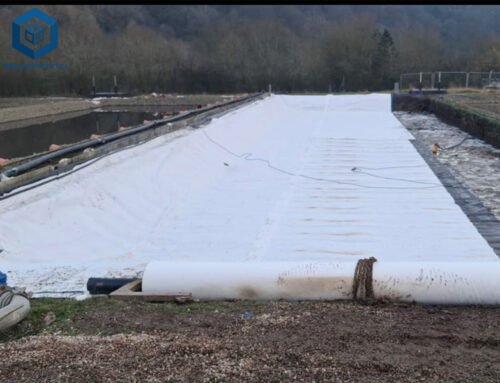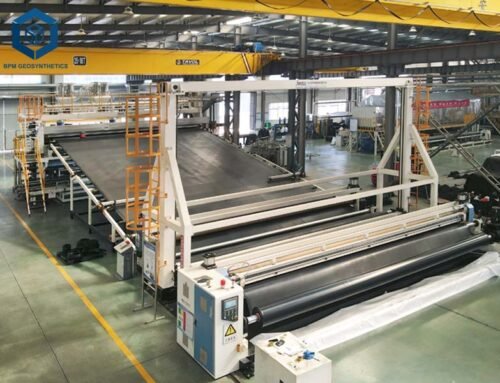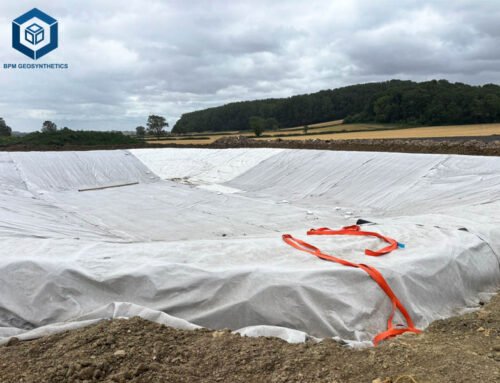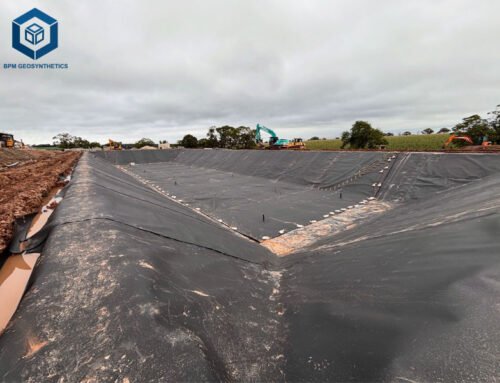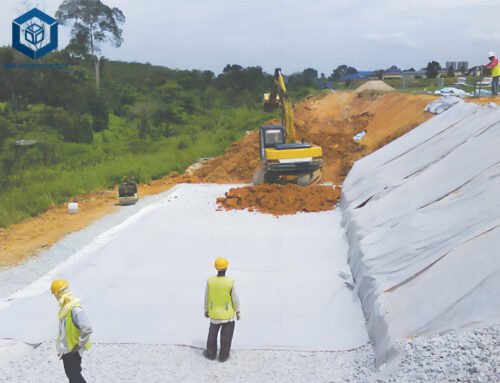Geogrids, essential geosynthetic materials, are pivotal in civil engineering for soil stabilization, reinforcement, and erosion control, supporting projects like roads, retaining walls, and landfills. With the global geogrid market valued at $1.35 billion in 2024 and projected to reach $1.97 billion by 2032 at a 4.7% CAGR, demand is driven by infrastructure investments and sustainability mandates (Statista, 2024). Geogrid Cost Per Square Yard range from $0.45 to $6.30 per square yard ($0.50–$7.00/m²), influenced by material, type, specifications, and project scale (bpmgeosynthetics.com, 2025). This guide provides a comprehensive breakdown of geogrid pricing, technical specifications, applications, and cost-saving strategies. Drawing from sources like bpmgeosynthetics.com, geosyntheticsmagazine.com, and Alibaba, it offers actionable insights to help contractors, engineers, and project managers save 15–30% on costs while ensuring 95% structural reliability in 2025.
1. What Is Geogrid?
Definition and Purpose
Geogrids are polymeric structures with a grid-like configuration, typically made from high-density polyethylene (HDPE), polypropylene (PP), polyester (PET), or carbon fiber. Their open apertures (10–100 mm) interlock with soil or aggregate, enhancing tensile strength (20–400 kN/m, ASTM D6637) and load-bearing capacity by 30–50%. Geogrids reduce construction costs by 15–25% compared to traditional methods like concrete or aggregate, offering lifespans of 20–120 years (bpmgeosynthetics.com, 2025). They are used in road construction, retaining walls, slope stabilization, and landfills, improving structural integrity and reducing maintenance needs.
Key Specifications
- Types: Uniaxial (single-direction strength), biaxial (dual-direction strength), triaxial (multi-directional strength), composite (with drainage elements).
- Materials: HDPE (50% market share), PP (40%), PET (10%), carbon fiber (niche, high-strength).
- Tensile Strength: 20–400 kN/m (ASTM D6637), critical for load distribution.
- Aperture Size: 10–100 mm, affecting soil interlocking efficiency.
- Roll Dimensions: 1–6 m wide, 50–200 m long, impacting bulk pricing.
- UV Resistance: 90% retention after 500 hours (ASTM D4355).
- Certifications: ISO 9001, ASTM D6637, GRI-GG standards.
- Durability: 50–100 years for synthetics; 20–50 years for coated geogrids.
- Manufacturing: Extrusion, weaving, knitting, or welding, tailored to application needs.
Applications
- Road Construction: Reduces pavement thickness by 20–30%, saving $50,000/km.
- Retaining Walls: Enhances soil stability by 40%, preventing wall failure.
- Slope Stabilization: Reduces erosion by 50–80% on steep slopes.
- Landfills: Reinforces liners, extending lifespan by 10–20 years.
- Railways: Improves track stability, reducing maintenance by 30%.
Geogrids’ versatility drives their 45% market share in road construction applications (bpmgeosynthetics.com, 2025).
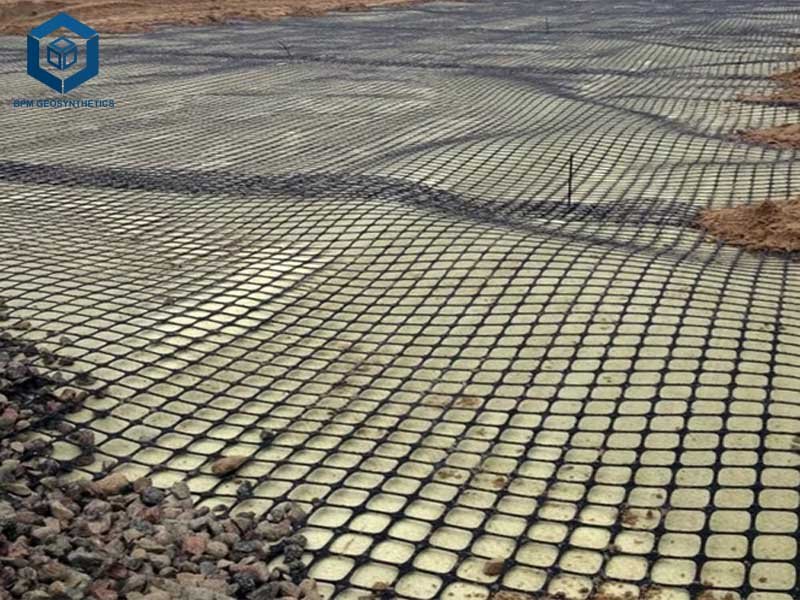
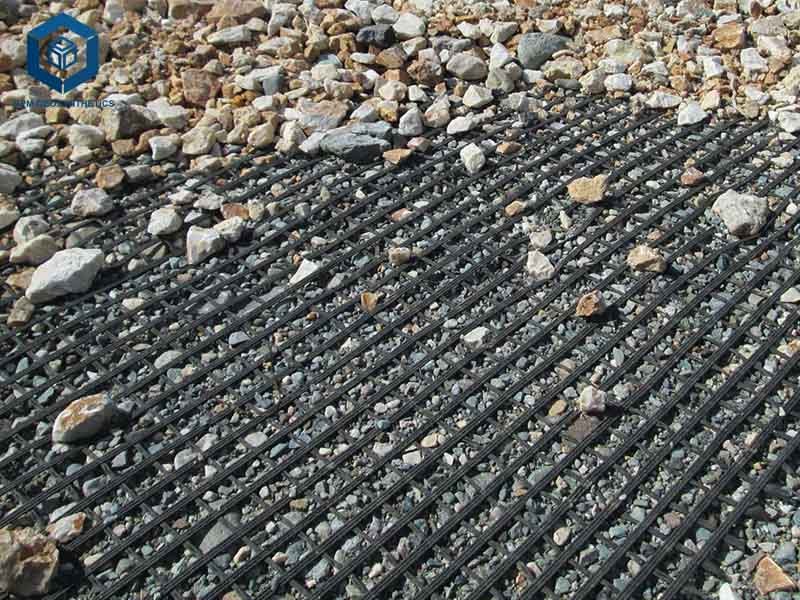
2. Factors Influencing Geogrid Cost Per Square Yard
Geogrid prices vary due to multiple factors, contributing 20–50% to project budgets. Understanding these ensures cost-effective sourcing.
2.1 Geogrid Cost Per Square Yard – Type of Geogrid
Uniaxial Geogrids: $0.45–$2.25/sq yd ($0.50–$2.50/m²)
- High tensile strength (50–200 kN/m) in one direction, for retaining walls and slopes.
- Applications: Embankments, steep slopes.
Biaxial Geogrids: $0.72–$3.15/sq yd ($0.80–$3.50/m²)
- Balanced strength (20–100 kN/m) in two directions, for road bases and pavements.
- Applications: Highways, parking lots.
Triaxial Geogrids: $1.35–$4.50/sq yd ($1.50–$5.00/m²)
- Multi-directional strength for complex projects like foundations.
- Applications: Soft soil reinforcement, heavy-duty roads.
Composite Geogrids: $1.80–$6.30/sq yd ($2.00–$7.00/m²)
- Combines reinforcement and drainage, for landfills and embankments.
Biaxial geogrids dominate with a 45% market share due to versatility (bpmgeosynthetics.com, 2025).
2.2 Geogrid Cost Per Square Yard – Material Composition
- HDPE: $0.45–$2.70/sq yd, durable, UV-resistant, for landfills and harsh environments.
- Polypropylene (PP): $0.72–$3.15/sq yd, lightweight, cost-effective for roads.
- Polyester (PET):Polyester Geogrid: $0.90–$3.60/sq yd, high tensile strength for embankments.
- Carbon Fiber: $2.25–$6.30/sq yd, premium for railways and heavy-duty applications.
- Recycled Materials: $0.40–$2.00/sq yd, reducing costs by 15–25% and emissions by 15%.
PP prices rose 7% in Q1 2025 due to crude oil fluctuations, impacting costs by 20–30% (bpmgeosynthetics.com, 2025).
2.3 Geogrid Cost Per Square Yard – Manufacturing Process
- Extrusion: $0.45–$2.70/sq yd, cost-effective for HDPE and PP geogrids.
- Weaving/Knitting: $0.90–$4.05/sq yd, for high-strength PET geogrids.
- Welding/Bonding: $1.35–$4.50/sq yd, for triaxial and composite geogrids, adding 10–15% to costs.
Woven geogrids reduce waste by 10%, lowering costs for eco-friendly projects (bpmgeosynthetics.com, 2025).
2.4 Geogrid Cost Per Square Yard – Project Specifications
- Tensile Strength: Higher strengths (100–400 kN/m) increase costs by 20–40%.
- Aperture Size: Smaller apertures (10–25 mm) for fine soils cost 5–10% more than larger ones (50–100 mm).
- Coatings: UV or chemical resistance adds $0.05–$0.27/sq yd.
2.5 Geogrid Cost Per Square Yard – Order Volume
- Small Orders (<5,000 sq yd): $1.35–$4.50/sq yd.
- Bulk Orders (>20,000 sq yd): $0.72–$3.15/sq yd, with 10–25% discounts.
Bulk orders from suppliers like BPM Geosynthetics save 15–20% (bpmgeosynthetics.com, 2025).
2.6 Geogrid Cost Per Square Yard – Installation Requirements
- Site Preparation: $0.09–$0.45/sq yd for grading and clearing.
- Labor: $0.45–$1.80/sq yd, higher in North America ($1.35–$1.80) than Asia ($0.45–$0.90).
- Equipment: $0.18–$0.72/sq yd for tensioners and rollers.
Skilled labor reduces errors by 20%, avoiding $5,000–$50,000 in repairs (bpmgeosynthetics.com, 2025).
2.7 Geogrid Cost Per Square Yard – Regional and Supplier Variations
- North America: $0.90–$3.60/sq yd, due to high labor and shipping costs.
- Asia-Pacific: $0.45–$2.70/sq yd, benefiting from lower production costs in China and India.
- Europe: $1.35–$4.50/sq yd, driven by stringent quality standards.
Suppliers like Tensar and HUESKER charge 10–20% premiums for certified products, while local suppliers like Taian BOWINS offer competitive pricing (bpmgeosynthetics.com, 2025).
2.8 Geogrid Cost Per Square Yard – Certifications and Quality Standards
Certified geogrids (ASTM D6637, ISO 9001) cost 10–15% more but ensure 98% defect-free products, avoiding $100,000–$500,000 in delays (bpmgeosynthetics.com, 2025).
3. Geogrid Cost Breakdown by Application
Road Construction
- Geogrid Type: Biaxial or triaxial, 20–100 kN/m tensile strength.
- Cost: $0.72–$4.50/sq yd (materials), $0.45–$1.80/sq yd (installation).
- Example: A 50,000 sq yd highway using biaxial geogrids costs $36,000–$225,000 (materials) and $22,500–$90,000 (installation).
- Savings: Reduces aggregate thickness by 20–30%, saving $50,000/km.
Retaining Walls
- Geogrid Type: Uniaxial, 50–200 kN/m tensile strength.
- Cost: $0.45–$2.25/sq yd (materials), $0.63–$2.25/sq yd (installation).
- Example: A 5,000 sq yd retaining wall costs $2,250–$11,250 (materials) and $3,150–$11,250 (installation).
Slope Stabilization
- Geogrid Type: Uniaxial or biaxial, 20–80 kN/m tensile strength.
- Cost: $0.45–$3.15/sq yd (materials), $0.27–$1.35/sq yd (installation).
- Example: A 15,000 sq yd slope project costs $6,750–$47,250 (materials) and $4,050–$20,250 (installation).
Landfills
- Geogrid Type: Composite, 20–100 kN/m tensile strength.
- Cost: $1.80–$6.30/sq yd (materials), $0.45–$1.80/sq yd (installation).
- Example: A 20,000 sq yd landfill costs $36,000–$126,000 (materials) and $9,000–$36,000 (installation).
Railroad Stabilization
- Geogrid Type: Biaxial or triaxial, 30–150 kN/m tensile strength.
- Cost: $1.35–$4.50/sq yd (materials), $0.90–$2.25/sq yd (installation).
- Example: A 20,000 sq yd railway project costs $27,000–$90,000 (materials) and $18,000–$45,000 (installation).
4. Step-by-Step Guide to Budgeting for Geogrid
4.1 Step 1: Define Project Requirements
- Application: Identify road construction, retaining walls, or slope stabilization needs.
- Specifications: Determine tensile strength (20–400 kN/m), aperture size (10–100 mm), and material (HDPE, PP, PET).
- Area: Calculate square yardage. A 10,000 sq yd project at $0.90/sq yd costs $9,000 in materials.
- Tip: Use design software like Tensar+ for 99% accurate estimates.
4.2 Step 2: Select Geogrid Type
- Uniaxial: For retaining walls, $0.45–$2.25/sq yd.
- Biaxial: For roads, $0.72–$3.15/sq yd.
- Triaxial/Composite: For complex projects, $1.35–$6.30/sq yd.
- Example: A 50,000 sq yd highway uses biaxial geogrids at $36,000–$157,500.
4.3 Step 3: Estimate Material Costs
- Base Price: $0.45–$6.30/sq yd.
- Add-Ons: UV or chemical coatings add $0.05–$0.27/sq yd.
- Bulk Discounts: Orders >20,000 sq yd save 10–25%.
- Example: A 100,000 sq yd project at $0.90/sq yd with 20% discount costs $72,000.
4.4 Step 4: Factor in Installation Costs
- Site Preparation: $0.09–$0.45/sq yd.
- Labor: $0.45–$1.80/sq yd.
- Equipment: $0.18–$0.72/sq yd.
- Example: A 10,000 sq yd project with $0.90/sq yd installation costs $9,000.
4.5 Step 5: Account for Logistics
- Shipping: $0.05–$0.18/sq yd domestically; international adds 10–20%.
- Storage: Budget $100–$500 for weatherproof storage.
- Example: Shipping 50,000 sq yd at $0.09/sq yd costs $4,500.
4.6 Step 6: Plan for Maintenance
- Inspections: $0.01–$0.05/sq yd annually.
- Repairs: Patching costs $50–$200, avoiding $1,000–$10,000 replacements.
- Example: Annual inspection for 10,000 sq yd at $0.02/sq yd costs $200.
5. Cost Breakdown Example: 50,000 sq yd Biaxial Geogrid for Road Construction
For a 50,000 sq yd highway project using biaxial PP geogrids (40 kN/m, 25 mm apertures), retailing at $0.72–$3.15/sq yd:
Materials (50%): $36,000–$157,500
- Geogrid (200 g/m²): $25,000–$100,000
- UV coating: $5,000–$25,000
- Quality control (ASTM D6637): $6,000–$32,500
Installation (30%): $22,500–$90,000
- Labor: $15,000–$60,000
- Equipment: $7,500–$30,000
Logistics (15%): $4,500–$13,500
- Shipping: $4,000–$12,000
- Storage: $500–$1,500
Profit Margin (5%): $2,250–$7,875
Total Cost: $65,250–$268,875 ($1.31–$5.38/sq yd)
This geogrid offers 40 kN/m tensile strength, 100 gal/min/ft² flow rate, and 95% stability (bpmgeosynthetics.com, 2025).
6. Cost-Saving Strategies for Geogrid Projects
Leverage Bulk Orders
- Benefit: Orders >20,000 sq yd save 10–25%.
- Example: A 2024 Indian highway saved $60,000 on 50,000 sq yd (bpmgeosynthetics.com, 2025).
Select Appropriate Geogrid Type
- Benefit: Uniaxial geogrids save 20–30% for retaining walls vs. triaxial.
- Example: A 2024 U.S. project saved $10,000 using uniaxial geogrids (bpmgeosynthetics.com, 2025).
Source Locally
- Benefit: Reduces freight costs by 10–15%.
- Example: Taian BOWINS’ China facility cut shipping costs for an Asia-Pacific project (bpmgeosynthetics.com, 2025).
Use Recycled Materials
- Benefit: Recycled PP geogrids cost 15–25% less.
- Example: A 2024 EU project saved $20,000 using recycled geogrids (bpmgeosynthetics.com, 2025).
Invest in Skilled Installation
- Benefit: Reduces failure rates by 20%.
- Example: A 2024 Brazilian project avoided $50,000 in repairs with certified crews (bpmgeosynthetics.com, 2025).
Negotiate with Suppliers
- Benefit: Comparing quotes secures 5–10% discounts.
- Example: A 2024 Canadian project saved $15,000 through negotiations (bpmgeosynthetics.com, 2025).
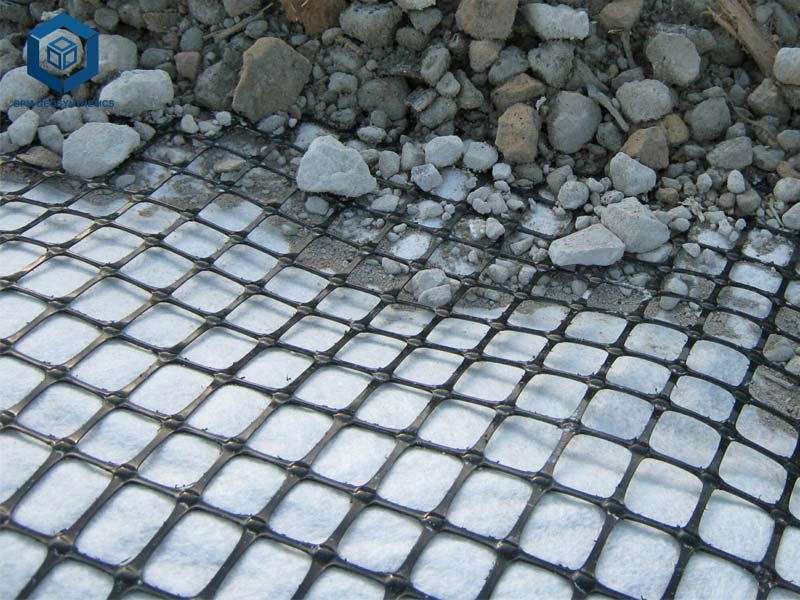
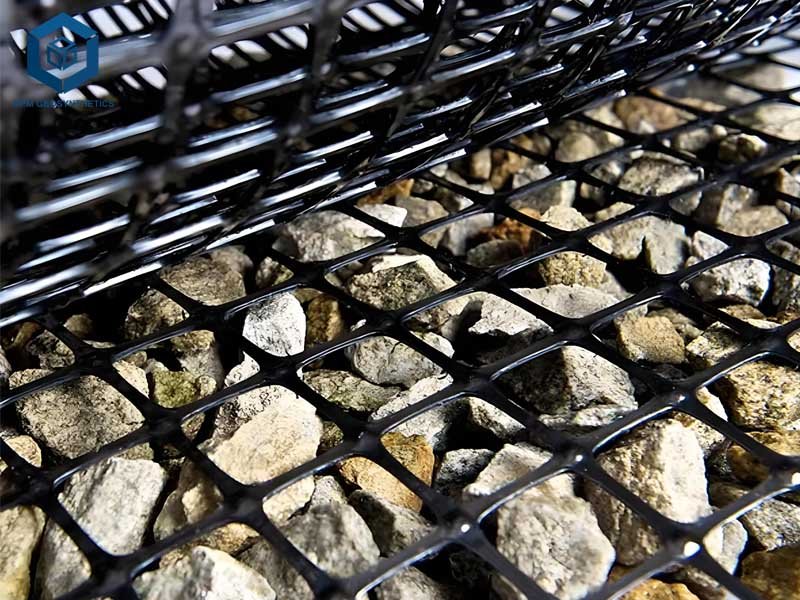
7. Advanced Considerations for Geogrid Selection
Site Conditions
- Soil Type: Clay soils require uniaxial geogrids; sandy soils suit biaxial.
- Environmental Factors: UV-resistant coatings add 5–10% to costs for exposed applications.
Regulatory Compliance
- Standards: ASTM D6637 ensures 95% performance efficiency.
- Regional Regulations: North America requires 60 mil minimum thickness for roads.
Long-Term Value
- Lifespan: Certified geogrids last 20% longer, reducing replacement costs.
- Maintenance: Geogrids cut maintenance cycles by 30%, saving $10,000–$100,000.
8. Case Studies: Geogrid Cost Efficiency
8.1 Case Study 1: Highway Expansion in India
- Project: 50,000 sq yd highway using biaxial PP geogrids (40 kN/m).
- Cost: $50,000 (materials, $1.00/sq yd), $40,000 (installation, $0.80/sq yd).
- Savings: Reduced aggregate use by 25%, saving $60,000.
- Source: bpmgeosynthetics.com, 2025.
8.2 Case Study 2: Retaining Wall in the USA
- Project: 10,000 sq yd retaining wall using uniaxial PET geogrids (80 kN/m).
- Cost: $15,000 (materials, $1.50/sq yd), $12,000 (installation, $1.20/sq yd).
- Savings: Avoided $20,000 in concrete costs.
- Source: bpmgeosynthetics.com, 2025.
8.3 Case Study 3: Slope Stabilization in Brazil
- Project: 15,000 sq yd slope using biaxial geogrids (30 kN/m).
- Cost: $15,000 (materials, $1.00/sq yd), $10,500 (installation, $0.70/sq yd).
- Savings: Reduced erosion by 80%, saving $30,000 in maintenance.
- Source: bpmgeosynthetics.com, 2025.
9. Conclusion
Geogrid costs, ranging from $0.45 to $6.30 per square yard, depend on type, material, manufacturing, and project scale. With the geogrid market growing due to infrastructure and sustainability trends, strategic choices like bulk ordering, local sourcing, and selecting certified suppliers like BPM Geosynthetics or Taian BOWINS can save 15–30% on costs. By defining project needs, choosing the right geogrid type, and optimizing installation, businesses can achieve 95% reliability while reducing budgets by $10,000–$100,000. Contact BPM Geosynthetics for tailored quotes and ASTM-compliant geogrids, ensuring durable, cost-effective infrastructure.

